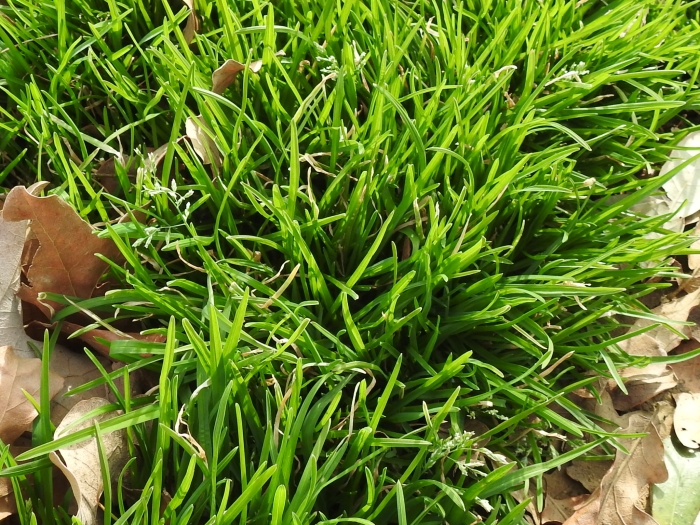Annual Bluegrass
(Poa annua)
Annual Bluegrass (Poa annua)
/
/

Sam Kieschnick
CC BY 4.0
Image By:
Sam Kieschnick
Recorded By:
Copyright:
CC BY 4.0
Copyright Notice:
Photo by: Sam Kieschnick | License Type: CC BY 4.0 | License URL: http://creativecommons.org/licenses/by/4.0/ | Rights Holder: Sam Kieschnick | Publisher: iNaturalist | Date Created: 2018-02-03T10:26:07-08:00 |























Estimated Native Range
Summary
Poa annua, commonly known as annual bluegrass or annual meadow grass, is a small, clump-forming, cool-season annual or perennial grass native to temperate regions from Europe to Asia. It typically grows 6-10 inches high and has a light green color with a tufted habit. Annual bluegrass thrives in moist, fertile soils often found in disturbed areas, including golf courses, lawns, and gardens, as well as in various habitats such as meadows, open woodlands, and grasslands. It produces small, inconspicuous flowers in the spring and can sometimes flower again in the fall if conditions are favorable.
Annual bluegrass is valued for its ability to quickly establish in cool seasons and provide a temporary green cover. It is often found in lawns, where it can be considered a weed due to its prolific seeding and ability to outcompete other grasses. In cultivation, it prefers moist conditions but can tolerate a wide range of soils. It is often used in overseeding programs on golf courses to provide winter color. However, it can become a nuisance due to its invasive nature and potential to develop resistance to herbicides. It is also susceptible to a variety of diseases, including anthracnose and Pythium blight.CC BY-SA 4.0
Annual bluegrass is valued for its ability to quickly establish in cool seasons and provide a temporary green cover. It is often found in lawns, where it can be considered a weed due to its prolific seeding and ability to outcompete other grasses. In cultivation, it prefers moist conditions but can tolerate a wide range of soils. It is often used in overseeding programs on golf courses to provide winter color. However, it can become a nuisance due to its invasive nature and potential to develop resistance to herbicides. It is also susceptible to a variety of diseases, including anthracnose and Pythium blight.CC BY-SA 4.0
Plant Description
- Plant Type: Grass
- Height: 0.5-1 feet
- Width: 0.3-0.7 feet
- Growth Rate: Rapid
- Flower Color: N/A
- Flowering Season: Spring, Summer, Fall
- Leaf Retention: Deciduous
Growth Requirements
- Sun: Full Sun, Part Shade
- Water: Medium
- Drainage: Medium, Slow
Common Uses
Low Maintenance
Natural Habitat
native to temperate regions from Europe to Asia
Other Names
Common Names: Speargrass, Annual Meadow Grass, Annual Poa, Winter Grass
Scientific Names: , Poa annua, Aira pumila, Catabrosa pumila, Festuca tenuiculmis, Ochlopoa annua, Ochlopoa annua subsp. notabilis, Ochlopoa annua subsp. pilantha, Ochlopoa annua subsp. raniglumis, Ochlopoa notabilis
GBIF Accepted Name: